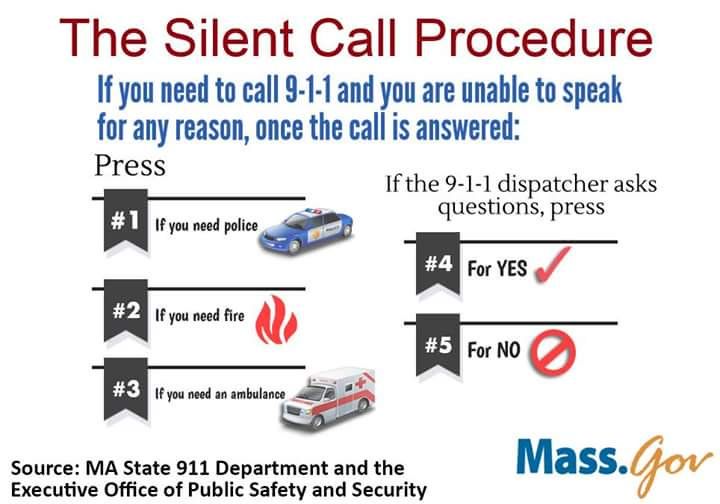Generally, 911 caller outreach from departments of public safety and emergency call center operations include the instructions, “Call if you can, text if you can’t.” But in Massachusetts, those making a silent 911 call can use their telephone keypad to indicate the public safety services they need.
This can be helpful in a few dire situations, including sexual assault and domestic violence incidents and home invasions, but it can also be helpful for callers with disabilities.
Monna Wallace, director of programs at the Massachusetts State 911 Department, remembered a silent 911 call that helped police rescue a woman trapped in a vehicle in a domestic violence situation that was escalating.
According to Mass.gov, once a 911 dispatcher has answered, silent 911 callers can press:
- 1 for police
- 2 for fire services
- 3 for an ambulance
When dispatchers ask questions, silent callers can also press:
- 4 to respond “Yes”
- 5 to respond “No”
The Silent Call Procedure was developed in the 1990s, according to the popular fact-checking website Snopes.com, but was brought to their attention when the Massachusetts Executive Office of Public Safety and Security and others posted this infographic to social media channels:

The Massachusetts 911 Silent Call Procedure
Massachusetts 911 dispatchers who receive silent calls will initiate the process and indicate which numbers to press, and wait for a response.
After using social media to share emergency information in 2015, Wallace said she got more calls from public safety officials throughout the country asking questions about the procedure than she did in 1996 when it was implemented in Massachusetts.
Learn more about how it works in this WMCTTV news clip from 2017:



